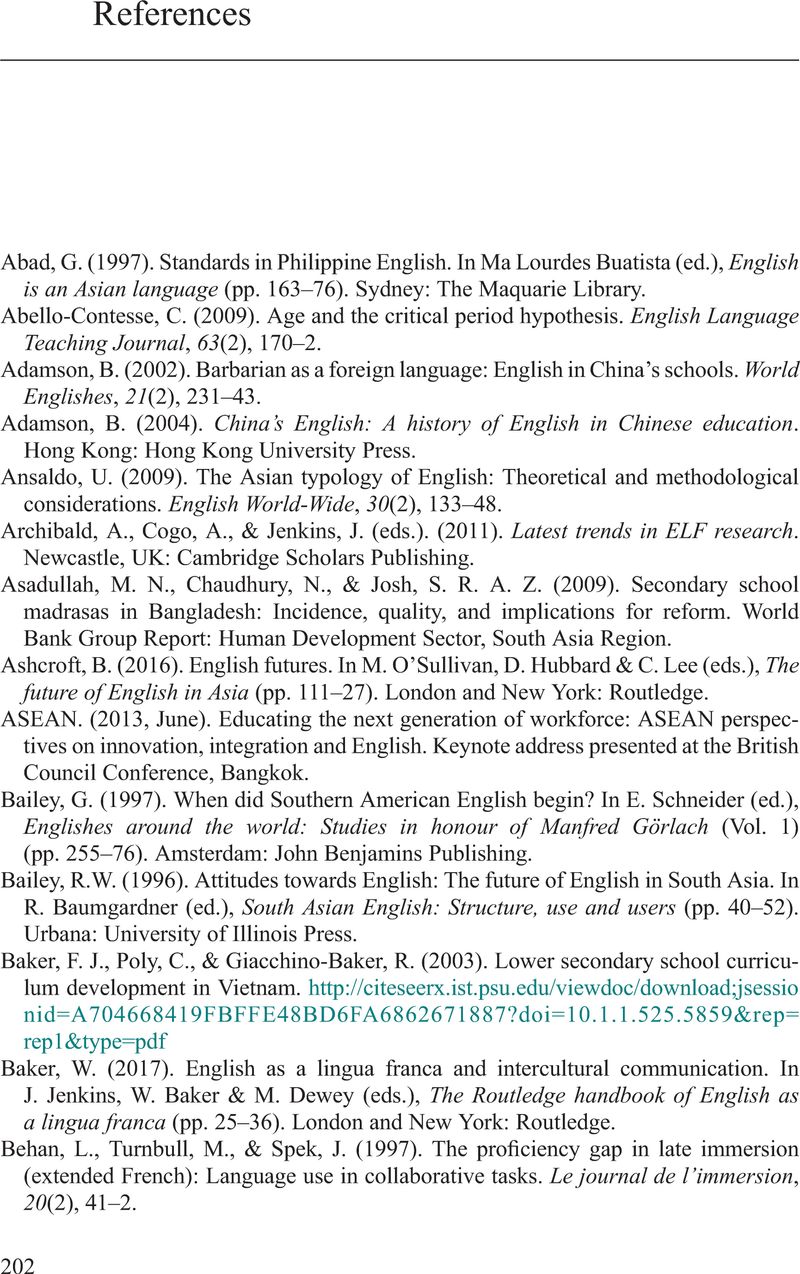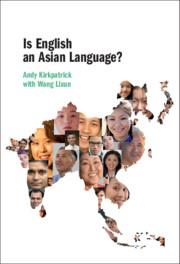Book contents
- Is English an Asian Language?
- Is English an Asian Language?
- Copyright page
- Dedication
- Contents
- Figures and Tables
- Introduction
- 1 How English Came to Asia
- 2 The Asian Corpus of English
- 3 Asian Varieties of English vs English as a Lingua Franca (ELF) in Asia
- 4 What Do Asian Multilinguals Talk about When Using English as a Lingua Franca?
- 5 The Transfer of Features and Communicative Strategies
- 6 Borrowing Words and Writing Asian Englishes
- 7 Non-standard Forms in Asian Englishes and ELF
- 8 English in Law, Religion and Popular Culture
- 9 English as a Language of Education in Asia
- 10 Implications for English Language Teaching in Asia
- 11 Conclusion
- References
- Index
- References
References
Published online by Cambridge University Press: 15 October 2020
- Is English an Asian Language?
- Is English an Asian Language?
- Copyright page
- Dedication
- Contents
- Figures and Tables
- Introduction
- 1 How English Came to Asia
- 2 The Asian Corpus of English
- 3 Asian Varieties of English vs English as a Lingua Franca (ELF) in Asia
- 4 What Do Asian Multilinguals Talk about When Using English as a Lingua Franca?
- 5 The Transfer of Features and Communicative Strategies
- 6 Borrowing Words and Writing Asian Englishes
- 7 Non-standard Forms in Asian Englishes and ELF
- 8 English in Law, Religion and Popular Culture
- 9 English as a Language of Education in Asia
- 10 Implications for English Language Teaching in Asia
- 11 Conclusion
- References
- Index
- References
Summary

- Type
- Chapter
- Information
- Is English an Asian Language? , pp. 202 - 216Publisher: Cambridge University PressPrint publication year: 2020



